Activities
Industry Development in Tan Yen District: Enhancing Investment Attraction
Published
10 months agoon
Identifying industrial development as one of the key drivers of local socio-economic growth, Tan Yen District has leveraged its advantages and focused resources on fostering the industrial sector. However, the number of enterprises (EEs) registering investments in the area remains limited. The district is implementing various measures to attract both domestic and foreign investments and increase occupancy rates in industrial zones (IZs) and industrial clusters (ICs).
Low Occupancy Rates
In recent years, Tan Yen District has taken significant steps to promote industrial development, such as land clearance, upgrading transportation systems, and improving infrastructure in IZs, ICs, and urban areas. Despite these efforts, the number of enterprises investing in the area remains low, leaving many plots in the IZs and ICs underutilized.
The district’s master plan includes five industrial zones—Phuc Son, Thuong Lan – Ngoc Thien, Ngoc Ly, Que Nham, and Ngoc Thien—and eight industrial clusters, covering over 1,100 hectares. As of now, the district has established one industrial zone and four industrial clusters. Between 2021 and 2024, the district attracted ten industrial projects with a total registered capital of over VND 2 trillion, bringing the number of active enterprises to nearly 600 and providing regular employment for over 12,000 workers with monthly wages starting at over VND 6 million per person.
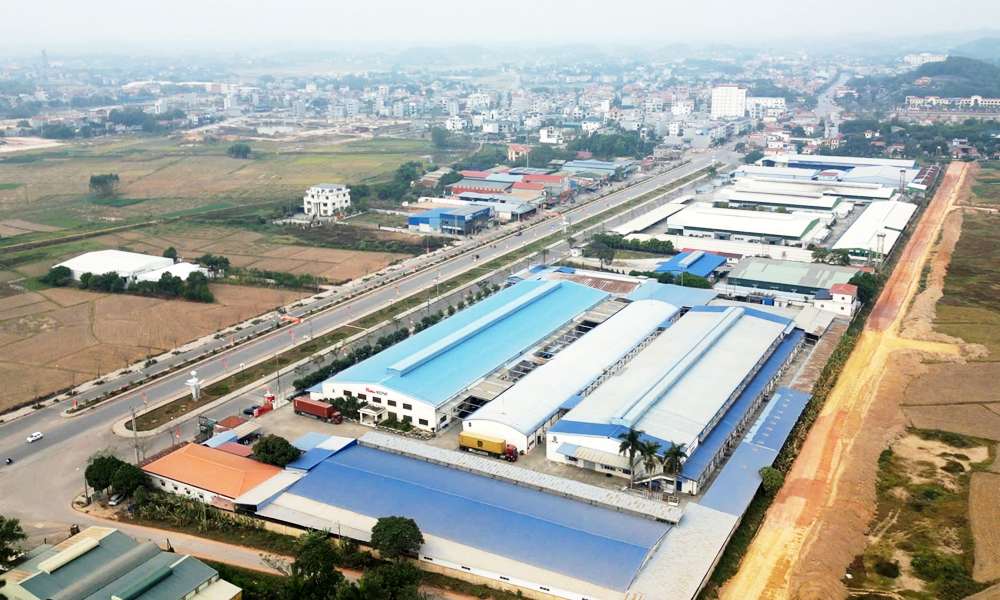
However, investment attraction in the district’s ICs has not matched their potential, resulting in low occupancy rates. For instance:
- Lang Cao IC (48 hectares, covering Cao Xa and Ngoc Ly communes) has completed most of its infrastructure but has only attracted eight projects, with an occupancy rate of around 20%.
- Kim Trang IC (Viet Lap commune) has had only one foreign direct investment (FDI) project occupying 4 hectares since 2021, equivalent to about 4% of the total area.
- Ngoc Chau IC (75 hectares) has two domestic enterprises renting 2.8 hectares (5% occupancy).
- Dong Dieu IC (Nha Nam town and Tan Trung commune) spans 40 hectares but has just one project utilizing 0.7 hectares.
According to Nguyen Thi Lan Huong, Head of the District’s Economic and Infrastructure Division, the primary reasons for these challenges include economic fluctuations, pandemics, and natural disasters, which have impacted investment activities domestically and globally. Additionally, the lack of synchronized infrastructure, limited availability of cleared land, and insufficient auxiliary services, such as restaurants, hotels, and commercial facilities, reduce the district’s competitiveness compared to neighboring areas. Most enterprises investing in the district are small or micro-sized, with limited financial, management, and technological capabilities, resulting in minimal added value.
Comprehensive Solutions for Clean Industrial Development
Under Bac Giang Province’s 2021–2030 master plan with a vision to 2050, Tan Yen District is slated for development under an urban-industrial model. By 2025, the district aims to complete phase one of land clearance for Phuc Son IZ and the infrastructure for Dong Dinh and Lang Cao ICs. The goal is to achieve an 80% occupancy rate at Dong Dinh and Lang Cao ICs and 20% at other ICs. The district aims for industrial output to contribute approximately 50% of total production value by 2025.
Nguyen Van Thuong, a representative of Tan Yen Industrial Investment and Service JSC, which manages Lang Cao IC, noted that the company has worked closely with local authorities to accelerate construction. The “build-as-you-go” approach has ensured the completion of essential infrastructure such as roads, electricity, and water, attracting several enterprises. To achieve full occupancy by 2025, the management board is actively promoting central and provincial investment incentives while working with the district authorities to create cluster-specific policies, expected to be finalized by Q1 2025.
In tandem with guiding industrial zone and cluster management boards to enhance competitiveness and attract enterprises, the district has directed functional departments and local authorities to review and adjust sectoral and regional plans. Key focus areas include:
- Expanding and upgrading transportation networks to eliminate bottlenecks, such as completing improvements to Provincial Road 398B (connecting to Bac Giang City) and Hoang Quoc Viet Road (from Cao Thuong Town to Hop Duc commune).
- Strengthening connections between industrial zones, urban areas, and economic centers within the province.
Accelerating Infrastructure and Policy Implementation
Tan Yen District is expediting the establishment and infrastructure development of industrial zones and clusters, linking industrial growth with urban, service, transportation, energy, and telecommunications infrastructure to provide optimal support for business operations. Priority is given to attracting investors with strong financial capacity, foreign investment projects, environmentally friendly operations, and the ability to generate local employment. Additionally, the district is improving the investment environment by offering tax incentives, streamlining administrative procedures, and reducing input costs to appeal to domestic and foreign investors.
Nguyen Quoc Hung, Chairman of the Tan Yen People’s Committee, emphasized the importance of direct dialogues between local authorities and investors to promptly address difficulties and support businesses. The district is also promoting its investment incentives and enhancing cooperation with enterprises and vocational training institutions to develop a high-quality workforce that meets market demands. These efforts aim to maximize the district’s potential and leverage regional connectivity effectively.
By 2025, Tan Yen District aspires to:
- Complete phase one of land clearance for Phuc Son IZ.
- Finish infrastructure development for Dong Dinh and Lang Cao ICs.
- Achieve 80% occupancy at Dong Dinh and Lang Cao ICs and 20% at other ICs.
- Have industrial output account for 50% of the district’s total production value.
You may like
-
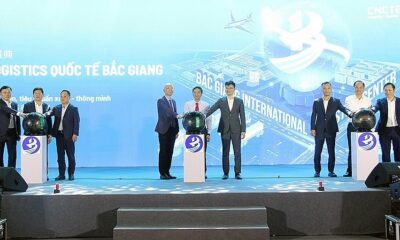

Bac Giang International Logistics Centre launched
-
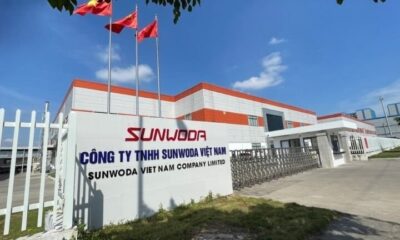

Chinese battery maker Sunwoda plans extra $22 mln investment in northern Vietnam plant
-
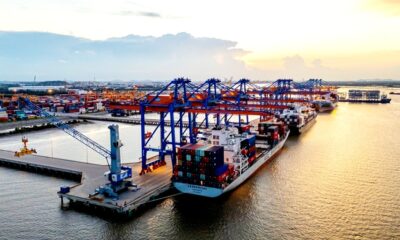

Haiphong private sector emerges as key engine of economic growth
-
South-central Vietnam province Phu Yen seeks investments under new program
-
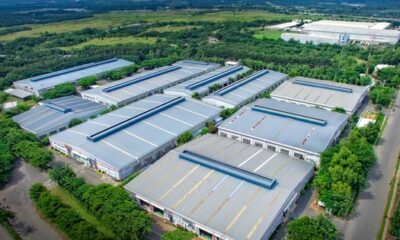

New Nearly 200-Hectare Industrial Park Approved Near Hanoi, Set to Employ 19,600 Workers
-
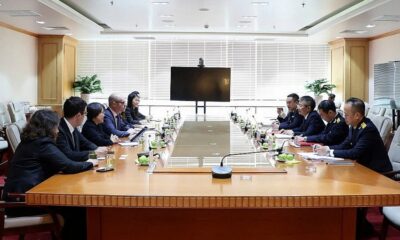

New tax policies aim to bolster tech sector
Activities
HoREA Proposes Allowing Businesses to Build Worker Housing Inside Industrial Parks
Published
7 months agoon
March 31, 2025The Ho Chi Minh City Real Estate Association (HoREA) has proposed a pilot mechanism that would allow businesses to invest in and construct worker housing within industrial parks.
In a document submitted to the Prime Minister, contributing feedback on a draft pilot policy aimed at boosting social housing development, HoREA suggested that businesses, cooperatives, and cooperative unions operating within industrial parks be permitted to build accommodation for their workers. It also called for allowing companies to rent housing outside industrial parks for the same purpose.
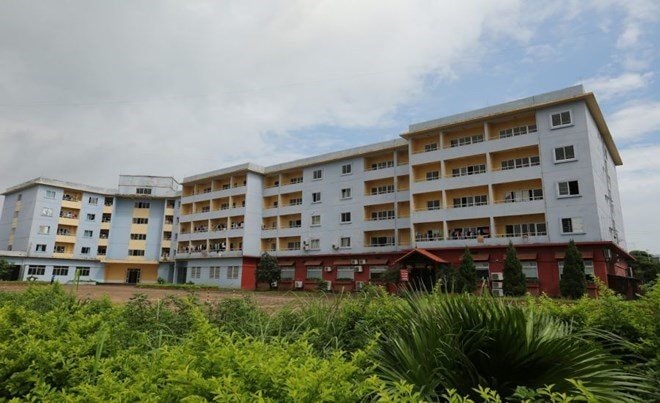
HoREA emphasized that all costs related to building or renting worker housing should be recognized as legitimate business expenses and be included in the enterprise’s operating costs.
The association further recommended expanding the policy framework to allow companies within industrial parks to lease social housing or worker accommodation built by third-party developers outside the park premises.
According to Mr. Lê Hoàng Châu, Chairman of HoREA, the current Housing Law (2023) only allows companies to rent worker housing inside industrial parks, without clearly defining whether they can rent social housing outside the parks or construct such housing themselves.
With worker housing demand at industrial parks far exceeding supply, HoREA pointed out that current social housing and dormitory offerings are inadequate. Meanwhile, commercial housing remains out of reach for most workers due to high prices. Therefore, the association urges the government to introduce policies enabling manufacturing businesses—despite not operating in real estate—to develop their own accommodation solutions for employees.
HoREA underscored that such policies would create a strong legal foundation, empowering enterprises and cooperatives to proactively resolve housing issues for workers. If allowed to construct their own housing, companies could ensure homes go to those in need, boosting employee retention, improving living standards, and supporting sustainable growth in industrial zones.
The association also proposed financial support mechanisms, including tax incentives, access to preferential loans, or government-matching support, to reduce the financial burden on companies participating in worker housing development.
Previously, many businesses had expressed a desire to buy land, build housing, and offer installment-based homeownership plans to workers, whereby employees would pay monthly through salary deductions. While this model helps workers secure long-term housing, legal procedures remain a major hurdle.
Providing accommodation has increasingly become part of corporate strategies to retain labor, alongside other employee welfare policies. For example, Nissei Electric Vietnam (Linh Trung 1 Export Processing Zone, Thu Duc City) has built a dormitory complex with 285 shared rooms, housing up to 2,280 workers. Eternal Prowess Vietnam (District 12) and Thien Phat Company (Linh Trung 2 EPZ) have also invested in on-site worker housing. Thien Phat’s project includes 368 units (35m² each), rented at VND 2.2 million/month, with 80% of the units for families and 20% for shared accommodations.
As of Q2 2024, Ho Chi Minh City has 18 industrial parks with around 1,700 businesses employing approximately 320,000 workers. Citywide, over 1.3 million people are employed in factories. However, there are only 16 official worker housing complexes, accommodating about 22,000 people. The majority of workers rely on rented rooms or stay with acquaintances—often sharing 12m² rooms among 2–3 people, which consumes 15–20% of their monthly income.
From 2021 to the present, Ho Chi Minh City has completed six social housing projects with 2,700 units and is building four more with 3,000 units. By April 30, the city aims to resolve legal hurdles and break ground on 5–6 additional social housing projects, totaling around 8,000 units.
Activities
Vietnam’s leading developer Becamex IDC targets $825 mln from ‘historic’ share offering
Published
9 months agoon
February 11, 2025Becamex IDC Corp, a leading eco-industrial and urban real estate developer in Vietnam, plans to raise nearly VND20.88 trillion ($825 million) from a public offering of 300 million shares on the Ho Chi Minh Stock Exchange (HoSE), equivalent to its current equity.
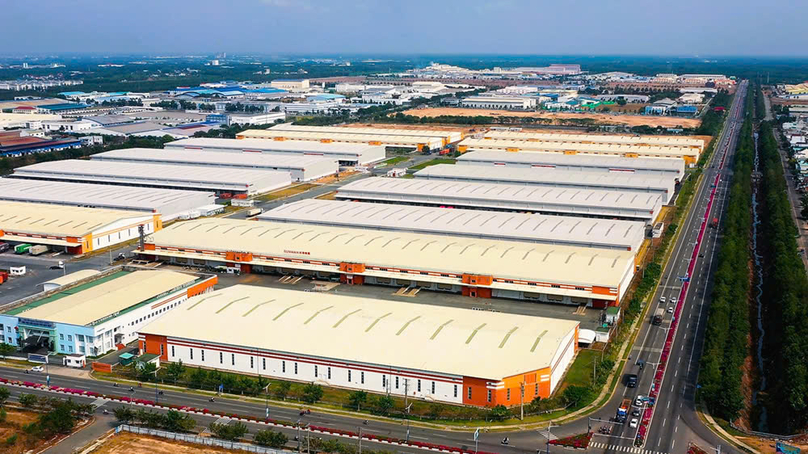
An industrial park developed by Becamex IDC. Photo courtesy of the company.
The corporation has approved the starting price of VND69,593 ($2.75) for the public auction of its BCM shares on the HoSE, aiming for VND20.88 trillion, nearly 40% higher than the initial expected value.
This offering is considered the largest since the state-owned capital divestment boom from 2016 to 2018.
The offering price is almost five times the book value of the stock at the consolidated financial statement for Q4/2024 and the average of the last 30 trading sessions prior to February 6, 2025 on the HoSE.
At the end of 2024, the company’s charter capital was VND10.35 trillion ($408.93 million), and equity was VND20.48 trillion ($809.2 million). If the capital raising is successful, its charter capital will increase to VND13.35 trillion, and equity will double to over VND41 trillion.
Becamex IDC, a giant in the industrial real estate sector in the southern province of Binh Duong, seeks to raise funds to invest in projects such as the Cay Truong Industrial Park and the expanded Bau Bang Industrial Park, as well as to contribute capital to existing companies, including Vietnam-Singapore Industrial Park J.V. Co. Ltd. (VSIP), Becamex Binh Phuoc Infrastructure Development JSC, Becamex VSIP Power Investment and Development JSC (BVP), Vietnam-Singapore Smart Energy Solutions JSC (VSSES), and Becamex Binh Dinh JSC. It also plans to restructure its finances.
Currently, the largest shareholder of the company is the People’s Committee of Binh Duong province, with a 95.44% stake. If the auction is successful, the state’s ownership will drop to 74%.
In the stock market, BCM moved counter to the VN-Index, steadily declining from VND87,000 ($3.44) per share at the end of 2022 to VND51,000 per share in April 2024. However, while the VN-Index stagnated, the ticker rebounded and closed at VND70,000 per share on Friday, up 37.2%.
The stock’s growth momentum slowed in the last quarter of the previous year due to a decline in business results. Specifically, in Q4/2024, Becamex IDC reported a sharp 60% decrease in revenue to VND2 trillion ($79 million).
Despite joint venture activities doubling profits to VND1.19 trillion, its after-tax profit still decreased by 33% to VND1.37 trillion ($54.13 million). For the whole year, its net revenue fell by 35% to VND5.2 trillion, and net profit dropped 12.5% to VND2.1 trillion.
Expansion ambition from 2024 to 2028
The corporation mainly operates in the fields of industrial park infrastructure investment, urban development, services, and trade. It is the developer of six industrial parks in Binh Duong province, covering a total land area of 2,931 hectares with an occupancy rate of 88%. The firm is also finalizing legal procedures to put the 700-hectare Cay Truong Industrial Park into operation in 2025.
In addition, Becamex IDC has expanded its reach to other localities outside Binh Duong, such as Binh Phuoc, Tay Ninh, Khanh Hoa, Quang Ngai, Thua Thien-Hue, Thanh Hoa, Nam Dinh, Ninh Binh and Hai Duong provinces, and Hai Phong city. The firm has also received in-principle approvals for four more industrial parks in Lang Son, Thai Binh, Binh Thuan, and Ha Tinh provinces.
Besides industrial parks, Becamex IDC has also developed urban and service areas such as the My Phuoc Residential Area, Thoi Hoa Residential Area, and Bau Bang Residential Area. The corporation plans to allocate resources for high-impact commercial projects like the WTC Exhibition Center, WTC Tower, and WTC Gateway cultural-central station complex in New Binh Duong town.
Moreover, the company, together with Singapore’s Sembcorp Industries, has developed the Vietnam-Singapore Industrial Park (VSIP) model, featuring an innovation center in an industrial-urban-service complex including a business incubator, advanced manufacturing center, and renewable energy research center.
These strategies will be implemented from 2024 to 2028, with a vision towards 2030. To achieve these goals, the company plans to increase its charter capital if necessary, borrow from credit institutions, and issue bonds.
Becamex IDC currently has total liabilities of VND38.3 trillion ($1.51 billion), with short-term debt of VND7.9 trillion and long-term debt of VND15.72 trillion. Its debt-to-equity ratio is 1.1 times.
Activities
Japan-invested solar cell maker Vietnam Sunergy to start $30 mln plant from June
Published
9 months agoon
February 11, 2025Japan-invested Vietnam Sunergy Wafer, a manufacturer of solar cells, plans to start official production at its $30 million factory in Hung Yen province from June.
The firm aims to complete administrative procedures in May and then install equipment in June, according to a recent project report. The plant covers 2.65 hectares in Minh Quang Industrial Park of the northern province.

A factory of Vietnam Sunergy JSC. Photo courtesy of VSUN Solar Vietnam.
The project has an annual capacity of 600 million silicon wafers, a component of solar cells, equivalent to 9,375 tons. It is set to employ 1,000 people.
Hung Yen recorded registered foreign direct investment (FDI) of $1.5 billion in 71 projects in 2024, the highest-ever figure in terms of capital, according to provincial data.
The province, a neighbor of Hanoi, has so far attracted FDI of $8.5 billion. It now has 17 industrial parks in its masterplan, covering 4,395 hectares. Of these, 10 facilities are now operational.

Bac Giang International Logistics Centre launched

Vietnam’s Exclusive Economic Zone boasts over 1,000 GW of wind power potential: report

Uncertainty weighing on real estate

Central Vietnam city seeks $1.84 bln for 15 projects in economic zone

